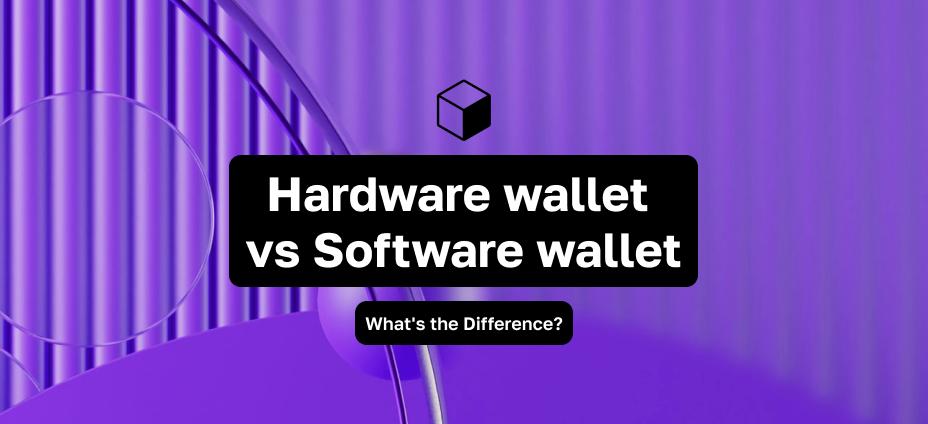
Bitcoin (BTC) cho người mới bắt đầu
Không gian crypto ngày càng phát triển có nguồn gốc từ đầu những năm 2010, khi Bitcoin – “ông vua” của các loại cryptocurrency – xuất hiện. Trong bài viết này, chúng tôi đã tổng hợp tất cả thông tin cần thiết để hiểu Bitcoin là gì, cách nó hoạt động và tại sao nó đóng vai trò quan trọng trong lĩnh vực này.
Lịch sử của Bitcoin
Vào tháng 10 năm 2008, một cá nhân hoặc nhóm ẩn danh với tên Satoshi Nakamoto đã công bố whitepaper có tiêu đề "Bitcoin: A Peer-to-Peer Electronic Cash System". Tài liệu này đã phác thảo khái niệm về một loại tiền kỹ thuật số phi tập trung, cho phép mọi người gửi và nhận thanh toán qua internet mà không cần một cơ quan trung ương như ngân hàng. Đây được coi là phản ứng trước cuộc khủng hoảng tài chính toàn cầu năm 2008 và những thất bại của hệ thống tài chính truyền thống.
Ngày 3 tháng 1 năm 2009, Satoshi Nakamoto phát hành phiên bản đầu tiên của phần mềm Bitcoin và khai thác block đầu tiên trên mạng Bitcoin, được gọi là “Genesis block” hay “Block 0”. Sau đó, giao dịch Bitcoin đầu tiên diễn ra khi Nakamoto gửi 10 BTC cho nhà phát triển Hal Finney vào tháng 1 năm 2009. Đây là cột mốc đánh dấu sự tồn tại của Bitcoin như một loại tiền tệ có thể sử dụng được.
Một trong những khoảnh khắc đáng nhớ nhất trong lịch sử Bitcoin diễn ra vào năm 2010, khi lập trình viên Laszlo Hanyecz đã mua hai chiếc pizza với giá 10.000 bitcoin. Nếu Laszlo giữ số bitcoin này cho đến tháng 2 năm 2025, giá trị của chúng sẽ vào khoảng 250 triệu đô la (với giá Bitcoin khoảng 25.000 đô vào thời điểm đó). Trường hợp này thường được nhắc đến như một ví dụ điển hình về sự tăng trưởng phi thường của Bitcoin và cách mà giá ban đầu của một loại cryptocurrency có thể thay đổi mạnh mẽ theo thời gian.
Bitcoin ngày nay là gì?
Hiện tại, Bitcoin là cryptocurrency phổ biến nhất trên thế giới. Nó được coi là đồng coin chủ chốt trên thị trường do là đồng tiền đầu tiên trong lịch sử. Vậy chính xác nó là gì?
Bitcoin là một loại tiền kỹ thuật số cho phép người dùng gửi và nhận thanh toán mà không cần trung gian. Đây là một tài sản hoàn toàn kỹ thuật số, không có hình thức vật lý. Về bản chất, Bitcoin chỉ là mã nhị phân gồm các số 0 và 1 đại diện cho dữ liệu; ticker của Bitcoin là “BTC” và ký hiệu của nó là “₿”.
BTC là một đồng tiền phi tập trung, nghĩa là không ai có thể kiểm soát nó. Mọi người có thể tự do gửi tiền cho nhau mà không sợ sự can thiệp hoặc kiểm soát từ chính phủ hay công ty tư nhân. Bitcoin có thể được dùng như một phương thức thanh toán, mặc dù chưa được chấp nhận rộng rãi. Tuy nhiên, cần lưu ý rằng, mặc dù người dùng được ẩn danh, tất cả các giao dịch đều hiển thị công khai trên mạng, đảm bảo tính minh bạch của hệ thống.
Bitcoin có tác động lớn đến thị trường crypto nói chung nhờ vị thế là một tài sản chủ chốt. Giá của nó – được quyết định bởi cung và cầu – thường là chỉ báo cho các đồng coin khác, vì chúng thường đi theo biến động của Bitcoin.
Tóm lại, Bitcoin không phải tiền tệ vật chất; nó hoạt động dựa trên công nghệ blockchain, ghi lại tất cả giao dịch trên các block. Bitcoin không thuộc về bất kỳ ai; nó tồn tại trên mạng blockchain và hoạt động độc lập.
Bitcoin hoạt động như thế nào?
Bitcoin vận hành thông qua một mạng lưới các máy tính (gọi là nodes) xác thực giao dịch. Các thành phần chính của hệ thống BTC gồm có:
-
Blockchain: Như đã đề cập, Bitcoin vận hành trên một sổ cái công khai gọi là blockchain, bao gồm các block, mỗi block chứa một tập hợp giao dịch. Nó được duy trì bởi các nodes trong mạng, đảm bảo tính minh bạch và an toàn.
-
Wallet: ví Bitcoin cá nhân là công cụ kỹ thuật số dùng để lưu trữ, gửi và nhận BTC. Có nhiều loại ví Bitcoin; việc chọn loại ví phù hợp phụ thuộc vào mục tiêu tài chính, chiến lược và mức độ chấp nhận rủi ro của bạn.
-
Giao dịch: Khi bạn gửi Bitcoin cho ai đó, một giao dịch sẽ được tạo và phát đi trên mạng. Mỗi giao dịch bao gồm địa chỉ Bitcoin của người gửi và người nhận, số lượng gửi, cùng chữ ký số để chứng minh quyền sở hữu. Thông thường cần 6 xác nhận để đảm bảo an toàn, mất khoảng 10–60 phút tùy theo tình trạng mạng.
-
Proof-of-Work: Các giao dịch Bitcoin được xác minh bởi thợ đào thông qua cơ chế Proof-of-Work (PoW). Thợ đào dùng sức mạnh tính toán để giải các bài toán mật mã phức tạp bằng hàm băm SHA-256. Khi giải xong, một block mới sẽ được thêm vào blockchain, và thợ đào được thưởng Bitcoin mới phát hành (block reward) cùng với phí giao dịch.

Bạn có thể sử dụng Bitcoin như thế nào?
Bitcoin có thể được sử dụng theo nhiều cách, tùy thuộc vào nhu cầu của bạn. Những cách phổ biến nhất bao gồm:
-
Lưu trữ giá trị: Nhiều người mua Bitcoin như một khoản đầu tư dài hạn, coi nó là hàng rào chống lạm phát và phương thức tăng trưởng vốn trong tương lai.
-
Mua sắm trực tuyến: Bạn có thể dùng BTC để thanh toán cho hàng hóa và dịch vụ ở nhiều cửa hàng và công ty chấp nhận nó.
-
Chấp nhận BTC trong kinh doanh: Nếu bạn là chủ doanh nghiệp, bạn có thể chấp nhận Bitcoin như một phương thức thanh toán thông qua payment gateway.
-
Chuyển tiền quốc tế: Bitcoin giúp thanh toán xuyên biên giới dễ dàng và rẻ hơn. Giao dịch BTC hoàn tất chỉ trong vài phút, trong khi chuyển khoản ngân hàng truyền thống có thể mất vài ngày.
-
Giao dịch: Nhà đầu tư mua bán Bitcoin trên các sàn giao dịch để kiếm lợi nhuận từ biến động giá. Có thể thực hiện giao dịch hàng ngày (ngắn hạn) hoặc theo chiến lược dài hạn.
-
Đào Bitcoin: Khai thác BTC có thể là một cách sinh lời. Quá trình này đòi hỏi nhiều kiến thức kỹ thuật và thiết bị chuyên dụng.
Bitcoin có phải khoản đầu tư tốt không?
Đầu tư vào Bitcoin có thể là một quyết định khôn ngoan hoặc rủi ro, phụ thuộc phần lớn vào kinh nghiệm và mức độ chấp nhận rủi ro của bạn. Nhờ sự phổ biến và vị thế là cryptocurrency đầu tiên, nó có tiềm năng tăng trưởng dài hạn. Với nhu cầu mạnh mẽ, BTC có thể mang lại lợi nhuận đáng kể, đặc biệt cho những người nắm giữ lâu dài.
Tuy nhiên, Bitcoin cũng là loại crypto biến động mạnh nhất, với giá cả khó lường khiến việc lập kế hoạch đầu tư trở nên khó khăn. Giá trị của nó có thể dao động lớn, vì vậy bạn cần chuẩn bị cho những biến động đột ngột. Để quản lý rủi ro hiệu quả, bạn nên luôn theo dõi thị trường và bắt đầu với khoản đầu tư nhỏ. Cách tiếp cận này giúp giảm nguy cơ thua lỗ lớn đồng thời cho phép bạn tích lũy kinh nghiệm.
Ưu và nhược điểm của Bitcoin
Giống như bất kỳ crypto nào khác, Bitcoin có những ưu điểm và nhược điểm. Hãy cùng xem xét chi tiết hơn:
| Khía cạnh | Đặc điểm | |
|---|---|---|
| Ưu điểm | Đặc điểmPhi tập trung: Bitcoin không bị kiểm soát bởi chính phủ hay tổ chức tài chính nào, mang lại sự tự do tài chính. Nguồn cung giới hạn: với tổng cung tối đa 21 triệu BTC, Bitcoin có thể chống lại lạm phát và sự mất giá tiền tệ. Khả năng tiếp cận toàn cầu: Bitcoin có thể được sử dụng ở bất kỳ nơi nào trên thế giới, lý tưởng cho giao dịch quốc tế. Bảo mật: các giao dịch BTC được ghi lại trên blockchain, đảm bảo minh bạch và an toàn. Tiềm năng sinh lợi cao: Bitcoin đã tăng giá đáng kể từ khi ra đời, hấp dẫn các nhà đầu tư. Sự quan tâm từ tổ chức: việc các tổ chức đầu tư ngày càng tham gia giúp tăng tính hợp pháp và thúc đẩy tăng trưởng dài hạn. | |
| Nhược điểm | Đặc điểmBiến động: giá Bitcoin thay đổi mạnh, khiến nó rủi ro đối với nhà đầu tư tìm kiếm sự ổn định. Rủi ro pháp lý: BTC phải đối mặt với sự không chắc chắn khi các chính phủ đưa ra quy định. Vấn đề mở rộng: tốc độ xử lý và dung lượng mạng của Bitcoin bị giới hạn, có thể gây tắc nghẽn và phí cao khi nhu cầu lớn. Rủi ro bị hack: dù mạng Bitcoin an toàn, nhưng sàn giao dịch và ví vẫn có thể bị tấn công. Ảnh hưởng môi trường: khai thác BTC tiêu tốn năng lượng lớn, tác động tiêu cực đến môi trường. Thách thức trong việc áp dụng: Bitcoin vẫn chưa được chấp nhận rộng rãi trong các giao dịch hàng ngày ở nhiều quốc gia. |
Việc Bitcoin ngày càng được chấp nhận khiến nó trở thành công cụ đa năng trong thế giới tài chính. Hiện nay, nó là một nơi lưu trữ giá trị, một phương tiện thanh toán và một hàng rào chống lạm phát. Tính phi tập trung của BTC trao cho người dùng quyền tự chủ tài chính lớn hơn, và việc sử dụng trong các lĩnh vực như thanh toán xuyên biên giới hay DeFi đang mở rộng. Tuy nhiên, vẫn còn tồn tại những bất định pháp lý ở nhiều quốc gia; mặc dù vậy, tiềm năng của Bitcoin vẫn tiếp tục được khai mở.
Bạn đã có câu trả lời cho tất cả thắc mắc của mình chưa? Bài viết này có hữu ích trong việc giúp bạn hiểu Bitcoin không? Hãy cho chúng tôi biết trong phần bình luận bên dưới!
Đánh giá bài viết




bình luận
0
Bạn phải đăng nhập để đăng bình luận